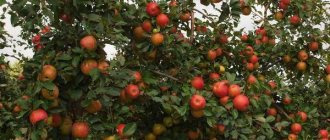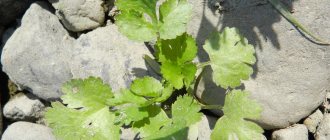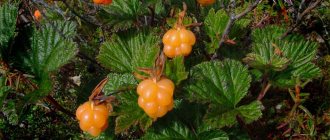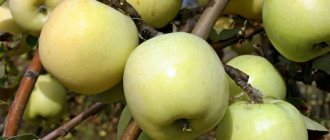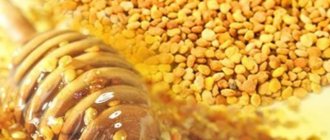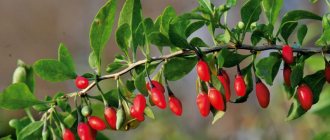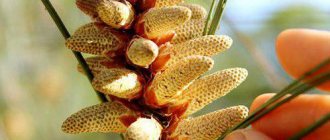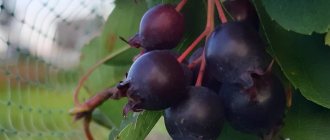In the article we discuss orchis - medicinal properties and contraindications, types and description of the plant, recipes for various diseases and areas of application. You will learn how to collect and prepare tubers, recipes for decoctions for impotence, colds and diarrhea, what diseases orthis helps to treat.
People have always had a special attitude towards the orchis plant; it is not for nothing that it has a lot of alternative names - cuckoo tears, dog tongues, bud, St. John's hands, core, wild orchid. Sorcerers used the double tubers of the flower for love spells and arousal of sensuality. Peasants used pairs of stems and roots in ancient rituals where nepotism, the funeral and resurrection of a cuckoo doll were played out. The Itelmens say that swimming at sunrise in the waters of the lake, on the shores of which orchis blooms, helps to find eternal youth and beauty.
The saddest and most heartfelt story associated with the cuckoo flower tells of a mother who was offended by her ungrateful sons. The woman, soaked in the rain, became very ill and fell ill, but the boys left her in bed without even giving her water. Only in the evening, tired from the fun walk, the children returned home, where an unprecedented miracle awaited them. The sick mother, not wanting to stay with them any longer, turned into a bird and flew out the window, shedding bitter tears as she flew. Since then, wherever the cuckoo drops droplets of tears, beautiful orchis flowers sprout.
General information about the plant, what it looks like and where it grows
- Spotted orchis (Orchis maculata);
- helmeted orchis (Orchis militaris);
- bifolia (Pltanthera bifolia);
- long-spurted cuckoo (Gumnadenia conopsea orhidaceae);
- cuckoo tears.
This is only a small part of the names of plants in the orchid that interest us. Orchis got its Russian name because of a pair of tubers that look like testicles (yatro - egg), or core. The orchid family is distinguished by its beautiful decorative flowers.
Orchids are also called northern orchids ; unlike their tropical relatives, they have smaller flowers, but are just as complex and beautiful.
Orchis is a perennial herb with broadly lanceolate leaves encircling a flowering stalk ending in a spike-shaped raceme of irregular flowers. The petals form a helmet-shaped dome on top, and a lip with a spur on the bottom.
Various colors: dark purple, pink-white, lilac-red.
There are two root tubers underground: old, overwintered, dark; young daughter, light. In some species the tubers are oval, in others they are finger-shaped.
Orchids grow in shady, damp places: in forests, in damp meadows, they do not like to live in groups. Tubers store nutrients that are used up during drought. In Russia it can be found on the Crimean Peninsula, the Caucasus, and the Krasnodar Territory. Rare species of orchis are listed in the Red Book.
Photo of orchis
Chemical composition of orchis
The underground parts of the plant are more popular. The root tubers of the plant contain medicinal mucilage (half of the entire root), 27% is starch, 5% protein, 1% sugar. As well as calcium oxalate, various minerals and salts.
The flowers contain tannin , a chemical substance of plant origin that has tanning properties, imparts an astringent and tart taste, is anti-inflammatory and tonic.
The leaves are rich in carotene, pectin and other beneficial substances.
Watering the plant
Orchis plant - photo
If the right soil is selected for the orchis, it does not need constant moisture. Only during dry periods is it necessary to water the plant more often.
Attention! Many gardeners use rainwater for irrigation. However, it is not safe. Rainwater contains a number of harmful chemicals. For example, acids are present. Therefore, to avoid an excess of harmful substances, it is necessary to water with settled tap water.
Orchis species
There are many types of orchis:
- male orchis;
- spotted orchis;
- orchis orchis;
- purple orchis;
- Caucasian orchis;
- Italian orchis;
- orchis dremlik;
- swamp orchis;
- monkey orchis.
Let's look at the most popular and useful ones.
Male
Male, orchis vankova, female, pine. Decorative bright, flowers are lilac, purple, pink, the lower lip is covered with small specks. Height up to half a meter, dark purple spots on the leaves and stem. Grows in clearings, pine and beech forests. It has taken root well in flower beds and is used for breeding new varieties. Tubers are ovoid.
Old medical books describe that its decoction has contraceptive properties, helps with stomach pain, inflammation in women and men, and with convulsions.
Spotted
Spotted, Tears of the Virgin, Serpentine, this orchis grows in the forest, along the edge of the swamps. It got its name because of the spots on the leaves and on the lower, three-lobed lip of the flower. Blooms in June-July, purple-lilac flowers. The root is forked, finger-like.
Spotted orchis helps especially against poisoning and diarrhea.
Helmet-bearing
It is distinguished by white and lilac flowers and a high dome (the so-called helmet) of the upper petals. The roots are well developed both last year and young. Grows up to 60cm. Tolerates dry climates well. Grated dry roots are added to dough, soup, and jelly.
Helmet orchis is used for diseases of the stomach and intestines, for coughs, etc.
Burnt
Red and white flowers are collected in the form of a ball at the top of the peduncle. The plant is rare in deciduous forests and meadows with high humidity, and is listed in the Red Book. The root nodules are oval; the young one always has a growth bud for the next generation. Differs in height up to 30cm.
How is orchis useful?
Orchis is useful, first of all, for its mild effect and the fact that it does not harm the liver and kidneys. At the same time, it has a strong healing effect, is completely absorbed and is not addictive.
For men
Prostatitis, prostate adenoma, slow sperm, decreased potency - these are purely male problems that are treated by orchis (alcohol or cognac tincture).
For women
For inflammatory processes in the pelvic organs in women (inflammation of the appendages, cystitis, adnexitis), taking tincture of orchis roots or taking an oil infusion of flowers gives good results.
For children
This is one of the few plants that can be given to young children. It is especially often used in children's practice, to soften and envelop intestinal lesions, catarrh and diarrhea in children.
As we see, orchis has a beneficial effect on almost all systems of the human body, then we will talk more specifically about how to properly use orchis for various diseases.
Orchis extract in capsules and dry orchis root
Regal and proud wild orchid
Orchis, wild orchid, cuckoo's tears, orchis - no matter what you call this delightful and regal plant, its beauty will not diminish. Orchis is a unique exotic garden crop. To understand the beauty of flowering, you need to look at it up close. But one thing is certain - the best candidate for the role of a “piece” accent, the main star, is difficult to find even among exotics.
But before admiring the beauty of the orchis, let’s stipulate the main thing: this is a protected, endangered plant, which under no circumstances should you look for in nature for your garden. Orchis, even if you are lucky enough to find it in the forest, leave it in its usual habitat.
Garden orchises, like garden snowdrops and lilies of the valley, are plants that are bred specifically for decorative purposes and industrial cultivation. And even if they are not found at every step, you can buy seedlings or seeds by ordering from catalogs. When purchasing plants from private gardeners or simply at the market, be sure to make sure that you are not participating in the criminal reduction of the population of this delightful species.
Medicinal properties of orchis
Traditional healers recommend orchis as a universal remedy for any age, for men and women.
An important property that determines its popularity is its soft enveloping effect and the ability to cleanse the blood and lymph of waste, toxins, and decay products. Blood circulation and oxygen exchange increase. Blood flow reduces inflammation, improves brain and nervous system function.
Restoring and strengthening the immune system
Immunity is the ability of our body to protect itself from external influences of viruses, microbes, infections, as well as from our own, degenerated cells that have become foreign. We receive part of our immunity by inheritance through the genetic memory of cells, and we acquire part of it during our lives, when faced with various diseases.
Orchis:
- Restores the balance of beneficial and harmful bacteria;
- cleans cells;
- enhances metabolic processes.
Strengthens the immune system and the body copes with infection, viruses and microbes.
You need to take jelly or tincture of young orchis roots for at least a month for visible results.
Contraceptive and menstrual cycle normalizing agent
For these purposes, both young and old orchis roots are used.
Recipe:
Grind the old tuber, pour in warm milk (250 ml), stir until mucus appears, take before sexual intercourse (1.5 hours before), mixing with wine. Keep in mind that old tubers have the property of expelling the fetus and should not be taken by pregnant women. Taking an oil infusion of orchis flowers helps stop inflammatory processes and restore menstruation.
Stops inflammation and normalizes the menstrual cycle.
Strictly contraindicated for pregnant women!
As an enveloping agent
Mucous decoctions of orchis are known for their enveloping properties. Therapeutic mucus serves as protection for the internal surfaces of organs from the aggressive effects of microorganisms and chemical compounds.
Protects the surface of internal organs from the negative effects of microorganisms.
For diarrhea
Often, if the diet is disrupted or after taking antibiotics, diarrhea, bloating, and discomfort in the intestines occur.
This is due to dysbiosis, a decrease in beneficial bacteria responsible for digesting food and absorbing nutrients. Taking mucous infusions of orchis allows you to slow down the development of pathogenic microflora and restore your own microflora .
Recipe:
To cure diarrhea in children and adults, make an aqueous tincture of young northern orchid tubers. 2 tbsp. Add boiling water (250 ml) to spoons of flour (salep) and cool for about 40 minutes, stirring until mucus forms.
Children need to take: 1 hour. spoon every hour; adults: 1 tbsp. spoon every half hour until diarrhea stops. Until the first formed stool.
For a cold
If a patient has a lingering cough and to prevent colds during the cold season, jelly with orchis root helps. Salep is diluted with hot water and milk and shaken for a long time until jelly is formed.
Drink warm with red wine, honey, cinnamon, cloves, and other spices. This jelly removes mucus from the bronchi, protects against complications, and improves the patient’s condition .
In case of poisoning
The enveloping effect of helps to avoid the consequences of poisoning . A layer of medicinal mucus instantly covers the inner surface of the stomach and intestines, preventing the absorption of toxic substances. Mucus adsorbs toxins and prevents them from entering the blood. You need to start taking it as early as possible.
Decoctions, infusions, jelly, tincture, whatever you have on hand will do.
For diseases of the genitourinary system
Prostatitis, decreased libido, inflammation in the genitourinary system. In the treatment of these diseases, an alcoholic (cognac) tincture of orchis roots and the flowers of this orchid infused with olive oil have been used for many years.
The tincture has been used for many years to increase male strength; the oil extract helps with inflammation. In any case, immunity and psychological mood will increase.
Relieves inflammation, improves the quality of sexual life.
From bleeding from hemorrhoids
Hemorrhoids are a very unpleasant disease, often accompanied by cracks and bleeding from the anus. To restore the rectal mucosa, enemas with an aqueous infusion of orchis root tuber are used.
Flaxseed flour is added to it for quick healing. Together with therapeutic enemas (tampons), take half a glass of salep decoction in water or milk twice a day on an empty stomach.
For abscesses
In case of boils, abscesses, or suppurations, apply ointment with orchis, secure with a bandage and leave overnight. The ointment draws out pus, relieves inflammation and the healing process goes faster.
For hair loss
It is good to use oil extract of orchis flowers. You need to rub it into problem areas and make hair masks. Tannin increases blood flow to dormant bulbs, stimulates their growth, tones the scalp and improves the condition of the body. You can take a teaspoon orally 2 times a day before meals. Healing mucus from orchis roots is also suitable for masks and for oral administration.
It is good to add burdock oil, amla oil, and crushed burdock root to masks to strengthen the roots and for hair growth.
The mixture is heated, rubbed into the scalp, a warm cap is placed on top, and the mask is kept on for at least an hour. With regular use, hair becomes vibrant, thick and shiny.
For gastrointestinal diseases
For gastritis, stomach ulcers, and colitis, take jelly from orchis root. Pour a teaspoon of mashed root into a glass of water or milk and heat, stirring, until mucus forms. Add honey, syrup, spices to your taste. The resulting dose of jelly should be drunk a day, alternating with meals, and prepare a fresh drink every day.
Kissel envelops the gastric mucosa, relieves irritation, protects and promotes cell regeneration. This leads to restoration of the inner surface of the stomach and intestines, ulcers are scarred. Processes in the gastrointestinal tract are normalized, but for a complete recovery you need a healthy diet, exercise and a positive mood.
For infectious diseases of the intestines (diphtheria, dysentery and others)
If intestinal damage and diarrhea are caused by dysentery bacillus, salmonella or other parasites, the disease proceeds violently and very quickly disables the entire body. Even water is not absorbed in the intestines; due to powerful intoxication, the temperature rises, vomiting, diarrhea, loss of strength, and dehydration.
To restore normal intestinal function, you need to drink a decoction of the young roots of our herb and do enemas from a water infusion and flax seed (flaxseed). The enveloping property of mucus will protect the intestines from infection, relieve severe intoxication and normalize the number of good and bad bacteria.
Start feeding the patient in small portions with a break of half an hour; if the mucus is digested, you can give the next portion. Small children begin to be given with one teaspoon.
For pyoderma (pustular skin lesions)
Do not try to treat pyoderma yourself. Pustular skin lesions can be caused by different pathogens: streptococcus, staphylococcus, Pseudomonas aeruginosa bacterium, fungi, it can be lichen or several pathogens at once. For proper treatment you need to know the pathogen. But there is one common cause of pyoderma - weakened skin and general immunity.
Rubbing the inflamed skin with the oil extract of orchis flowers can alleviate the patient’s condition, dry the wounds, reduce redness (especially in young children), and improve the local immunity of the skin.
Ingestion of infusion or jelly with young roots enhances overall immunity. Orchis is used in complex therapy with other medicinal herbs in the treatment of this complex disease.
For dermatitis and eczema
Dermatitis and eczema are often associated with gastrointestinal problems, allergic skin reactions, injuries, and the creation of favorable conditions for the proliferation of microbes (poor hygiene, warm and humid environment).
The affected skin is wiped with an oil infusion of flowers or a decoction of the root. By taking mucous infusions orally, we remove the cause of skin disease and increase immunity.
For alcohol intoxication
Alcohol intoxication is caused by ethyl alcohol poisoning. Orchis root should be taken as for any other poisoning. Removing toxins will improve your general condition, relieve nausea and pain in the stomach. Cleansing the blood and lymph will improve the supply of blood and oxygen to the brain, and confusion and headaches will go away.
For general tone and prevention
To increase overall tone and strengthen the body, prepare a decoction of the young root, starch and sugar, in milk. Mix a tablespoon of salep and a tablespoon of starch and pour in ½ cup of hot water. Mix the mixture well, when mucus appears, pour in one glass of hot milk and heat in a water bath, stirring until thick. Add sugar and cinnamon.
Drink gradually over the course of a day, warm. This drink restores strength after surgery or serious illness. The course of admission is not limited, depending on your health condition. Sugar can be replaced with honey or berry syrup.
Collection, preparation and storage of orchis
Since some species of this beautiful orchid of temperate latitudes have almost disappeared in natural conditions, it has become difficult to find them in forests and meadows. Thanks to their decorative and medicinal properties, you can purchase planting material and grow a plantation in your summer cottage.
All parts of the plant, flowers, roots (old tubers and new, young ones) are useful, although young ones are more often used, but for some recipes it is worth drying several old ones.
Orchis flowers
Flowers are collected completely open, dried in a ventilated area in the shade, best stored in paper or cotton bags.
Orchis root
The root is found oval, like an egg, or forked, elongated, like a sausage. In any case, there are 2 roots per plant: young (light, full) and old (dark and wrinkled). You can remove the tubers after the end of flowering, peel them from soil and skin, rinse thoroughly, put them in boiling water for 2-3 minutes and dry well. It is better to dry by stringing it on a thread in the shade or over a stove.
You can store up to 7-8 years in boxes or bags made of natural materials. Old and young tubers need to be stored separately; they are used in different recipes. If possible, it is useful to eat 2-3 orchis roots over the summer, simply raw. It does not have a special taste or smell, but it will undoubtedly bring benefits.
Planting and care
The crop can be planted with tubers and seeds in lighted or slightly darkened areas of the garden, in loose and moist, but not swampy soil.
Planting with tubers
The young tuber is separated from the main tuber and planted in spring or autumn. At the same time, the soil in which the plant grew is added to the hole. 15-20 days after the separation of the first young tuber, a new tuber can grow on the main one. Therefore, the transplantation procedure is most often repeated.
Planting by seeds
If there is a certain fungus in the soil, then the seeds will germinate, so this method is rarely used. Self-sowing of the crop is possible, the sprouts of which are used for planting in the desired place in the garden. After the flowering phase - in May-June, the seeds ripen in a box until August. The culture is frost-resistant, resistant to diseases, but cannot resist slugs and snails. After planting, the tubers do not germinate for 2-3 years; flowering of the crop begins after 3-5 years. If seeds are sown, the plants bloom only after 5 years of development.
Recipes with orchis
Each disease has its own recipes for using orchis root or flowers. Even old or young roots have different medicinal properties and different effects on humans.
Here are the most commonly used recipes for general use. Most often, young orchis root ground into flour is used. This flour is called salep .
Infusion
An infusion, or so-called infusion, is obtained by infusing plant materials with water. Infusions are prepared using hot or cold methods.
| Cooking method | Description |
| Hot way | Pour a tablespoon of crushed dry plant material into a glass of boiling water, stir, hold in a water bath for 10 minutes, let the infusion cool slowly for 40-50 minutes, use as recommended for your illness. |
| Cold way | Pour the plant material with warm water in the same proportions and leave for 40 minutes, stirring occasionally. |
Such infusions should be stored in the refrigerator and used immediately as they are prepared. Infusions can be made with hot milk or infused with wine. It is usually taken warmed up. The infusion of orchis is mucous and does not have a special taste or smell. Various additives to improve taste are not prohibited.
Tincture
Tincture of orchis in alcohol-containing liquids has all the properties of mucus, but is most often used to solve men's health problems. There are several ways to prepare the tincture.
| Cooking method | Description |
| Simple | Grind 3 young orchis roots into flour, pour in 0.5 liters of vodka or alcohol, leave in a dark place for a month at room temperature. Strain, squeeze, take 30 drops 2 times a day before meals. |
| Effective | You will need old orchis root: - 2 tablespoons of salep; - a crust of black bread (preferably homemade, about 0.5 loaves); - a bottle of quality cognac. Crumble the bread, mix with the powder and pour in cognac. Leave the mixture for a month, then strain, squeeze, dry and burn. Pour the ashes into the tincture and leave it for another 2 months in a dark, warm place. Take in the same way as in the first case, preferably with red homemade grape wine. We take it for a month, rest for a week, repeat the cycle until the planned results. |
Decoctions
Decoctions (or decoctions) are prepared from dense parts of plants, roots.
Grind the raw materials, add cold water, bring to a boil, stir and leave in a steam bath for 30 minutes. Warm decoction is taken immediately, the shelf life of the decoction is 2 days.
For comfort, you can add honey, wine, cinnamon and other spices.
Ointments
Mix salep with lard in a 1:1 ratio, heat in a water bath for 10 minutes, stirring continuously. In some recipes, a mixture of orchis with lard or cooking oil is steamed with hot milk and heated for 10-15 minutes, stirring.
The ointment is used for external use.
Kiseli
Grind the orchis root thoroughly in a coffee grinder, pour a teaspoon of salep with a glass of boiling water and stir until you get jelly. Instead of water, you can use warm milk, heat the mixture, stirring constantly, but do not boil, bring it to the consistency of jelly.
Red wine, seasonings, syrups, and honey are usually added to jelly to improve the taste. You need to prepare fresh jelly every day and drink it for at least a month.
Kissel without flavoring additives is also used for enemas for some diseases. For better results when treating hemorrhoids, you can add ground flaxseed.
Oil extract
The oil extract is made from orchis flowers. It has anti-inflammatory and regenerating properties, improves blood circulation.
It is used externally for alopecia, orally a teaspoon before meals for prostatitis and to improve potency. Prepared from crushed plant flowers and high-quality olive oil, in a ratio of 1:10. Leave in a dark place at room temperature for at least 2 weeks.
Growing orchis at home
Today, orchis is a “VIP plant” in the field of landscape design and for the craft of “avid” gardeners. Therefore, the question of the characteristics of growing and caring for it is very relevant.
“Northern Orchid” is not a picky plant, but there are still some nuances: soil and lighting, watering, fertilizers, preparation for wintering.
- Lighting.
When choosing a location where the orchis will show off, you need to pay attention to the lighting of the selected area. This place should absolutely not be in the shade. The optimal location for it is a sunny area with light, diffused shade. - Selection of substrate and transplantation of orchis.
As for the soil, the plant prefers well-moistened, but notable for its looseness. They must allow sufficient moisture and oxygen to pass through. The coefficient of natural humidity is of particular importance, since the soil must be well moistened, but thus in no case swampy. There is a pattern: the more correctly the soil is selected, the less care the orchis requires during the long summer heat. During planting, the substrate that you take out of the hole can be improved by adding peat to it in a ratio of 1:1, and river sand in a ratio of 1:1/2. - Moisturizing.
The “wild orchid” does not need constant watering if it is planted in suitable soil and in a suitable place. The exception is long-term droughts; during this period the plant should be saturated with sufficient water. Many who grow this flower water it with rainwater, which in itself is not entirely safe. Rainwater is a source of many chemicals, including acids, which can harm our northern queen if supplied in excess. - Fertilizing for orchis.
Fertilizers for this magical flower should be chosen organic; it does not like mineral ones. The best option would be compost and pine needles - this combination will provide beautiful, bright flowering. It is good to introduce them when sowing, and then twice a year to mulch the soil with a layer of 5 cm or more. The right time for this is mid-spring and early autumn, after winter cold and frost and immediately before their onset. - Wintering the plant.
Before the winter period, the “northern orchid” does not feel much fear, but some measures will have to be taken before the winter period. During the first autumn cold weather, that part of the plant that is located above the ground should be cut off completely to the ground. This will ensure our wild beauty a safe existence during the thaw period and during periods of strong temperature changes and high humidity.
These conditions consist of room temperature and good location of our seedlings. Temperature indicators will be suitable if their range is from 18 to 24 degrees. The place for future decoration of our garden area should be allocated where there is the most sunlight, this could be a balcony or windows located on the sunny side of the house.
Possible contraindications and side effects
Orchis does not contain harmful or toxic substances. You can use both the underground and aboveground parts of the plant without harm to the body. Pregnant women should not use old tubers . Young tubers can be consumed by pregnant and nursing mothers, and young children. The only possible contraindication is an allergic reaction to certain components of the plant.
I would like to warn our wonderful men who take orchis tincture to increase potency: an overdose is bad. It can lead to pain and discomfort in the lower abdomen.
You need to take infusions from orchis flowers with greater caution, as they contain tannins and tannin. An overdose of tannin causes stomach problems, so consult your doctors before use.
Doctors' opinions and reviews
Opinion of Efimenko Tatyana Yuryevna - herbalist and herbal specialist.
Doctors remain neutral regarding the use of orchis for medicinal purposes. Its composition has been well studied and the benefits are undeniable. Basically, salep jelly is prescribed as an enveloping agent for diarrhea, poisoning, even for young children; medicinal mucus is useful for bronchopulmonary diseases.
Unlike synthetic drugs, there is no negative effect on the liver and kidneys when using orchis root.
And along with getting rid of the main problem, the immunity and tone of the whole body increases. The plant is prescribed in complex therapy with hormonal drugs and during recovery after surgery, chemotherapy, and radiation therapy.
Patients for whom orchis helped get rid of stomach ulcers, hemorrhoids, or helped to recover after severe poisoning or intestinal infections are more generous with their reviews. It is especially worth noting the large number of positive reviews from men. Thanks to this plant, they got rid of many male problems with the prostate, increased potency and self-esteem.
Pests and diseases
Despite their “orchid” nature, orchids are amazingly resilient plants. They are resistant to all types of fungal diseases and pests. But they have no natural protection against slugs. Snails, slugs and other leaf beetles adore this exotic plant. And around orchis plantings it is better to place special traps or lay out circles of straw.
Orchis morio is now known as the species Anacamptis morio. © Blandine L

